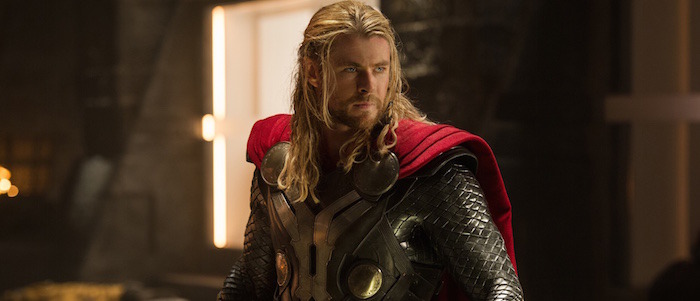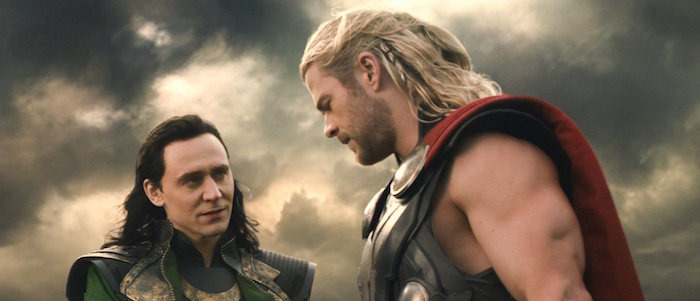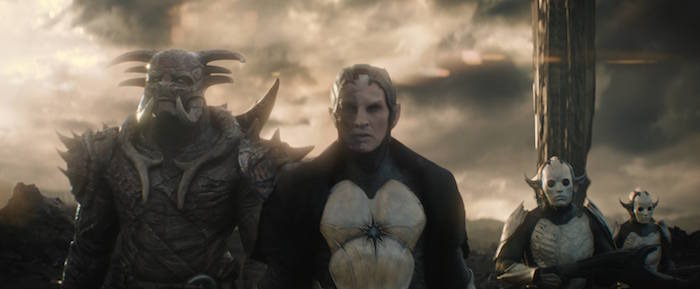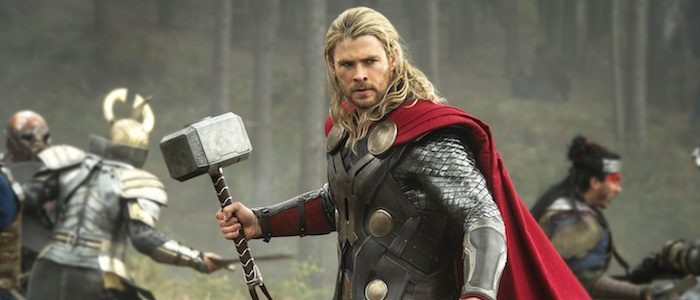Road To Endgame: 'Thor: The Dark World' Is A Metaphor For Its Own Massive Problems
(Welcome to Road to Endgame, where we revisit all 22 movies of the Marvel Cinematic Universe and ask, "How did we get here?" In this edition: Thor: The Dark World defines Marvel's "villain problem" but doesn't do much else.)Thor: The Dark World plays like Marvel's first truly troubled production. The rush to get the ball rolling saw the exit of Thor director Kenneth Branagh, after which Patty Jenkins was hired but departed soon after, citing creative differences. It was for the best, as Jenkins would go on to direct Wonder Woman for DC; arguably The Dark World's only lasting impact.It's a messy film sprinkled with brief moments of fun, aiming to take Thor on a universe-spanning adventure on a larger scale than before, but it sacrifices anything resembling ethos in the process. The film replaces character beats with overwrought plotting and exposition, and while it still delivers a romp of a final act, it commits a shared-universe cardinal sin: its protagonist ends up right where he began, and goes nowhere in between.
A Misaligned Tale of Convergence
Thor: The Dark World has too much going on, and yet, too little by way of connective tissue. The film depends too greatly on the coming together of disparate threads, most often by happenstance. Its various subplots are connected not by theme or by character, but by coincidence. It has the appearance of well-structured drama, but it leaves too many elements hanging in mid-air to form a coherent whole.It's also an unfortunate meta-text about its own narrative failings.The film opens millions of years in the past, as Odin's father Bor — appropriately pronounced "bore"— battles The Dark Elves during something known as "The Alignment." The Elves are vanquished amidst Odin's voiceover exposition, one that finds itself repeated not 45 minutes later. The Elves' weapon, The Aether, is buried "where no one can find it" (i.e. it's left in a cave) and everything is just hunky dory until present day. Now, The Alignment is about to occur once more, an event during which the Nine Realms of the Cosmos (Earth, Asgard, and the seven that don't matter) come into contact, and the laws of physics go slightly wonky.The problem is, nothing really happens or can happen until The Alignment takes place. Earth is the event's epicenter, and if the Aether is deployed at just the right moment, it could... make the universe dark again? The stakes are never made clear. Dark Elf leader Malekith (Christopher Eccleston) must be present for there to be a threat, though he has nothing of note to do until the worlds align. All Thor and his friends can do is waste time wheel-spinning until Malekith decides to act. Every character in the film is simply waiting for other story pieces to fall into place, and outside of Thor breaking Loki out of prison an hour in, no one seems to have a shred of narrative agency.Jane Foster (a returning and underutilized Natalie Portman) investigates the effects of the Alignment on Earth. By coincidence, she gets temporarily sucked into Svartalfheim, the prologue-planet made of dust and greenscreen. She stumbles upon the barely-hidden Aether — later revealed to be an Infinity Stone — after which its gooey red liquid takes residence in her bloodstream.By coincidence, Thor happens to be talking to universe-observer Heimdall (Idris Elba) at this exact moment. Heimdall's gaze fails to catch Jane during the brief time she's away, though she gets herself out of the dust realm with ease, so Thor's arrival is for naught. Also by coincidence, Malekith awakes from his millennia-long slumber. There's little causality between events in the film, despite its own dialogue hinting at more interesting alternatives; Malekith mentions being awakened by the Aether and the Alignment, though what connection he has to either them, or what connection they have to each other, is unclearMalekith seeks to invade Asgard. His only dramatized motivation is their ancient blood-feud, and by sheer coincidence once more, he stumbles upon Jane and the Aether during his siege. His plan here appears to be the very literal destruction of Asgard's throne; he tosses as grenade at it (an action without consequence; it's easily repaired) and the whole sequence plays like a spiteful prank. In failing to flesh out even Malekith's basic motivations, his scenes have no bearing on the story. Things could have progressed exactly as they did if Jane hadn't been present on Asgard.Coincidence driving setup isn't inherently a problem, but the threads in Thor: The Dark World are only connected by chance, and they often have no payoff. As Malekith's henchman destroys Asgard's prison, a jailed post-Avengers Loki (Tom Hiddleston) points him in the right direction out of spite for his brother. This henchman goes on to kill Loki's mother Frigga, a dramatic irony that is neither used to build on Loki's story, nor even remarked upon. Few decisions in the film come from genuine motivation, and even fewer result in genuine drama.
Svartalfheim, Oh Svartalfheim
Nobody cares about the empty, lifeless planet Svartalfheim. Not the audience, and not even the characters, despite it being the setting of some of the most important scenes.The film opens on Svartalfheim, the site of Asgard's culling of the Dark Elves; the planet's ruins are where the Aether is hidden, and where Jane Foster ends up when she discovers The Alignment. Jane, an astrophysicist who studies wormholes and related phenomena, is magically transported to the other end of the universe, yet this experience has no bearing on her as a character.Svartalfheim is the only backdrop in Thor: The Dark World that looks particularly ugly. The rest of the film is admittedly remarkable in this regard, bridging the worlds of fantasy & sci-fi by contrasting metallic tech with vividly coloured regality. Svartalfheim is also where the film's emotional climax occurs, for multiple characters. Yet Malekith returning to the spot where his people were massacred adds little to the drama, nor does the fact that he's facing the grandchildren of the man responsible. The scene would have played out exactly as-is if it were set in giant ball-pit. The film attempts (and fails) to build to an emotional crescendo here. Loki seemingly martyrs himself, though this is revealed to be a ruse, and his arc is undone thanks to the film's sequel-itis. The plot then tacks on an entire fourth act so the film can finally have some fun. Despite the haphazard setup though, this second climax is one place Thor: The Dark World actually succeeds (Thor and Malekith playing inter-dimensional Portal is a blast to watch).Svartalfheim is, quite literally, a dark world. It's too muddy to get a good look at, and the action taking place on it is consistently obscured. More importantly, its scenes feel divorced from any weight or meaning, despite its deep connection to the characters.Of course, that might have a little something to do with Malekith himself...
Nobody Cares About Malekith
When it comes to Marvel's "villain problem," Malekith the Accursed is front and center. There's no psychology, no philosophy, nor even a vague cultural hatred driving him. If he hadn't awoken from his slumber, his henchmen could have enacted his plan in his stead; Thor: The Dark World would be exactly the same without him. However, Malekith isn't the root cause of the film's problems. He's merely a symptom.They say great heroes need great villains, but great villains can't be written if their heroes have no underlying story, nor any outlook that needs to be challenged. At the core of these ill-defined character ideologies lies the fact that Thor: The Dark World lacks a philosophy of its own. It has no idea what it wants to say, and in the process, has little care for exploring its characters, a central story flaw that bleeds into its filmmaking.After Malekith kills Thor's mother, Thor's enraged reaction takes place off-screen. Instead, the film cuts to a closeup of Thor's lightning bolt as it strikes Malekith's face, burning one side of him so he can slightly resemble his comicbook counterpart. It's a strange example of superficial fealty to the source, and it takes precedence over what ought to be one of the film's most affecting moments.Thor: The Dark World has no idea what it's about, so it never has any idea which of its scattered pieces to highlight in the edit. At one point, it sets up a love triangle involving Thor, Sif and Jane, which it never pays off. At another, it pays off Thor's journey from the previous film — a lesson he already learned.The Dark World begins with Thor cleaning up the other realms after war has broken out. He has no time for celebrations or relationships, and he seems begrudgingly content. The film however, isn't about Thor searching for balance or finding happiness, or anything that might justify this setup. The plot simply happens to Thor, after which he returns to exactly what he was doing before.Jane stumbles into the film and becomes a plot device. The magic MacGuffin becomes a part of her, slowly killing her from within. But rather than having to contend with mortality (or even a frayed relationship with Thor), she simply moves from scene to scene. That, or she's physically moved by someone else while kidnapped or unconscious. The result is Jane being robbed of the perspective and narrative agency she had in the first film.Similarly, Loki is in a position to contend with the weight of his actions. He's given time to reflect on the events of Thor and The Avengers as he sits in prison, after being arrested by his own family. Later in the film, he's even given the opportunity to redeem himself. He does so in Thor's eyes, but both his death, and the appearance of his character arc, turn out to be illusions. The actual Loki learns nothing. He secretly usurps the throne while disguised as Odin, and gets what he always wanted — or so it would seem.Capturing the throne in secret doesn't grant Loki a modicum of victory. In both his prior appearances, what he wanted wasn't just a physical throne, but the recognition and acceptance that accompanied it. The Dark World pays lip-service to Loki, one of Marvel's greatest villains, but the film is both unable to contend with the weight of its predecessors, and unable to escape obligatory setups for future sequels.And yet, the film somehow manages to find moments of fun and genuine levity. Not only despite being about nothing, but in a perverse sense, because it's about nothing.
Falling Back on Formula
An hour of screen time passes. Frigga, mother to Thor and Loki, dies without so much as a meaningful sentence. Her children feel neither anger nor abandonment beyond her funeral scene. Loki's cell is trashed, but the scene where he trashes it — his emotional response to the death of the woman who taught him his tricks, granting him his very identity — takes place mostly off-screen. Immediately after this skimmed period of mouring, Thor and Loki team up to escape. They do so for reasons only half explained, but it's here that a sudden, almost wrongheaded tonal shift makes the film momentarily enjoyable.Were there a coherent theme driving Thor: The Dark World, some character study or perhaps even an undercurrent of guilt, Thor and Loki's comedic banter, mere hours after their mother's death, would feel grossly out of character. And yet, it's their very lack of characterization up until this point that allows the film to devolve into yet another series of quips. Prior to their breakout, the film is bland enough that this jarring shift is inoffensive.Some of the action scenes succeed as if by accident. The film contorts itself to fit a tone similar to The Avengers, despite telling a wildly different story; for every one of its narrative missteps, it features at least one enjoyable action or comedy beat. Frigga's meaningless funeral is followed by Thor and Loki's jailbreak, a scene rife with rapid one-liners as the duo re-establishes a brotherly dynamic. Shortly after, there's yet another Marvel death fake-out, though this is followed by the film's fish-out-of-water segments, as Thor hunches over in the front seat of Jane's tiny car and hangs his hammer on a coat rack. The tone is terribly inconsistent, but the goofy asides feel like a reprieve from all the stilted drama.When Malekith finally attacks, there are practically no stakes. What is he trying to do? What will happen if he succeeds? I couldn't possibly tell you. But as luck would have it, even this gaping narrative hole is spackled over by the sheer ridiculousness of Thor and Malekith tumbling between dimensions, as Thor's hammer Mjolnir tries to play catch-up. Nothing particularly interesting occurs from a character standpoint, but Jane, Selvig, their intern Darcy and her own intern Ian do get to play around with gravity a bit, transporting Dark Elves from one spot to another and lifting cars with their bare hands.Does any of this matter? Your mileage may vary. It's fun, but none of it amounts to very much. Thor swings his hammer exactly once, and the whole story is resolved when the Dark Elf ship about to crush him and Jane happens to fall through a portal instead, crushing Malekith on the other side. The coincidences never cease, and no one including Thor makes any impactful choices.Thor goes back to space, Jane remains on Earth, and that's pretty much the end of it. If you have vague memories of a happy reunion between the two, I'm afraid you're thinking of a post-credits scene. Thor's return to protect the other realms is of no lasting consequence, since he's back on Earth in the very next film (Avengers: Age of Ultron). Loki sits on the throne of Asgard, though this too is inconsequential, since he's taken off it just two scenes into Thor: Ragnarok.Unlike the mistakes of past Marvel films, which were eventually course-corrected within the larger narrative, Thor: The Dark World's issues are too deeply rooted to be fixed retroactively. The film, like the Alignment at its center, may as well have passed by without anyone taking notice.
***
Expanded from an article published April 11, 2018.




